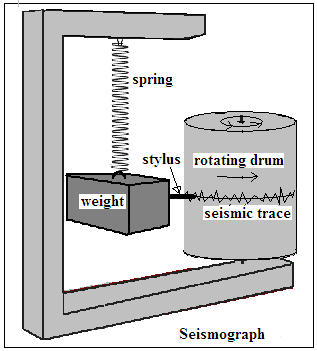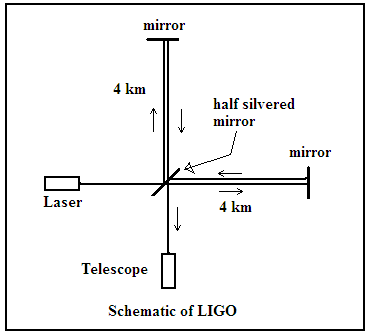The earthquake, among all natural phenomena, is perhaps the most frightening., says S.Ananthanarayanan.
Storms, blizzards, floods, forest fires, deserts, tidal waves are examples where nature’s forces leave humans powerless and terrified. The earthquake, no less devastating, dwarfs the others because it strikes without warning
Masaya Kimura, Nobuki Kame, Shingo Watada, Makiko Ohtani, Akito Araya, Yuichi Imanishi, Masaki Ando and Takashi Kunugi, from the University of Tokyo, the National Institute of Advanced Industrial Science and Technology and the National Research Institute for Earth Science and Disaster Resilience, Tsukuba, Japan, announce in the journal, Earth, Planets and Space, that they have identified a feature of earthquakes that allows a substantially early warning before the earth actually quakes at a place
Earthquakes arise from realignments in the earth’s crust when pressure between adjoining plates, which builds up, is suddenly released. The realignment rapidly moves from the place where it starts, down to the end of the fault, and huge energy released. The high speed movement of great masses sets off waves of compression and shear, which pass through the surrounding rock and earth, in all directions, downwards and horizontally. The compression waves, which are like sound waves moving through land or water, travel the fastest, but the shear waves and surface waves, which cause the ground to move, result in most of the damage.
It is estimated that there are 500,000 detectable earthquakes in the world each year, of which 100,000 can be felt, and 100 that cause damage. While there are instances of such events occurring very close to populated areas, most of them take place in desert regions or at the bottom of the sea. A major event, however, can cause devastation hundreds of kilometers away, not only destroying buildings and highways, but leading to fires, accidents, gas leaks and explosions. And then the damage caused by tsunamis.
All earthquakes are now detected and recorded by sensitive instruments installed in most parts of the world. The instruments first detect the compression wave and then shear wave. The difference in time reveals the distance, and readings that are taken at more than one station can fix the location. With many recording stations over an area, the detection can trigger a warning for places that are more distant. As the shear waves travel about 7 km in a second, the warning can come a few seconds before the tremor reaches. Even this degree of warning can be useful to save lives. There are arrangements to set off city-wide sirens, for instance, and even automated opening of the doors of fire stations before the earthquake disables them.
For all this, the warning is not early enough, as even the compression wave moves at only about twice the speed of the shear wave, and it takes time for the signal to reach the sensors. And Tsunamis, which originate in the sea, would come without warning. The warning hence needs to come sooner, which would be possible if the seismic event itself sent out the signal with effectively instantaneous speed. This is just what the team in Japan has announced – detecting gravity waves, which radiate at the speed of light when there is very energetic displacement of huge masses of material
Gravity waves
Einstein’s General Theory of Relativity makes a prediction that the acceleration of masses, in the same way as acceleration of electric charges, should lead to emission of energy in the form of waves. In the case of moving electric charges, such as alternating currents in an antenna, the result is electromagnetic waves. This is readily understood, as electric currents lead to magnetic effects, which in turn create electric fields, and so on. The Theory of Relativity treats the force of gravity as the result of curvature that the presence of mass induces in the fabric of space. This conjecture, which arises from gravity being indistinguishable from acceleration, and the equivalence of mass and energy, has been tested and proved at the astronomical scale. Acceleration of masses, then, the theory shows, would create ripples in space, in the form of instantaneous changes in the distance between the points past which the disturbance propagates
The team writing in Earth Planets and Space refers to work in the past few years where the possibility of detecting such waves, which arise from the sudden redistribution of mass that happens in seismic events, has been examined. The Tohoku earthquake of 2011, off the east coast of Japan, was the most powerful earthquake recorded in Japan and the fourth most powerful recorded in the world. By 2011, there were a large number of different kinds of seismic recording stations in place in most of the world, and certainly in Japan. What got collected was hence really comprehensive, real time data of all kinds of signals, of vibration of the earth, as well as gravitational effects, before, during and after the earthquake.
The instruments to measure the very feeble effects of distant earthquakes usually rely on a heavy weight, suspended by a spring, or now, in a magnetic field maintained by superconducting coils, which responds with great sensitivity to vibrations of the casing of the arrangement. Naturally, arrangements of such sensitivity are beset by unwanted disturbances, and the data needs to be statistically examined to separate the meaningful signals from the ‘noise’.

During analysis of the data of the 2011 earthquake, the paper says, “….nearly all the single-channel waveforms did not show any signals beyond the noise level except for several outliers.” The researchers hence used another method, of putting together the data of selected seismometers, to create a ‘stacked’ data set. The stacked data, the paper says, “showed a clear signal in the vertical component,” albeit a weak signal, just a quarter of a billionth of the acceleration due to gravity of the earth, “at an average distance of 987 km”.
That the signal detected is feeble, the paper says, is possibly because the gravitational effects on the weight in the instruments are matched by acceleration of the ground on which they stand. A different method of detecting the effect, one which has been used to detect gravity waves that were expected to be generated by collapsing black holes at astronomical distances, would be more effective.

The method used for cosmological research is the Laser Interferometer Gravitational-Wave Observatory (LIGO), which has a pair of 4 km tubes, which light beams traverse and serve to detect changes in the length of the path. A similar device, the Torsion Bar Antenna (TOBA), consists of a pair of thin, hollow bars suspended as a cross. The bars have mirrors at either end and laser beams can monitor very small changes in length along one axis.
This device would be orders of magnitude more sensitive than the existing arrangements and, now that the existence of gravity waves from seismic events has been confirmed, may serve as a means to detect the events a tiny fraction of a second after they commence, and alert areas that are at risk with much greater speed than is possible so far
------------------------------------------------------------------------------------------ Do respond to : response@simplescience.in-------------------------------------------